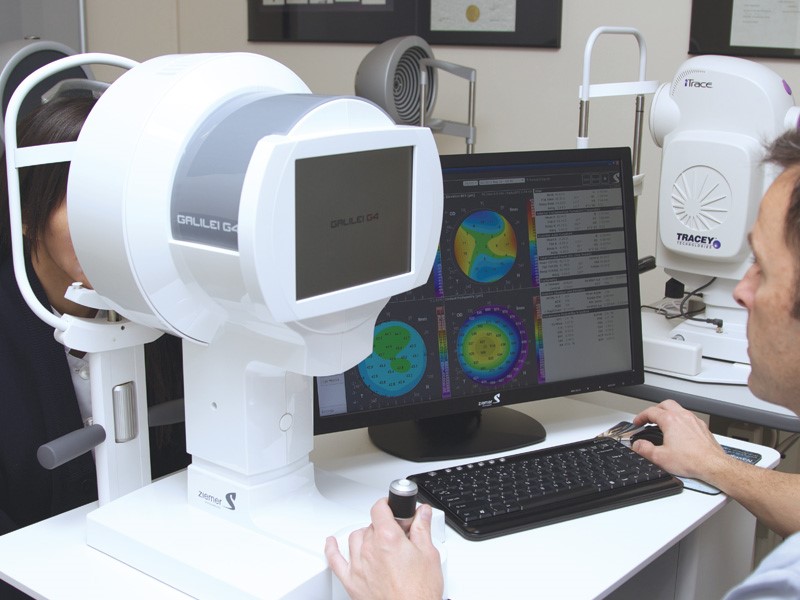Astigmatism
What is it?
It is a refractive defect (ametropia) which causes the eye to be unable to form a clear image from an object, because the power of the optical system varies between the principal meridians; the higher and lower power.
The main cause is usually lack of corneal symmetry (toricity). Also, there is a degree of toricity in the lens or the retina, among others, which may cause minor astigmatisms.
There are several classifications, according to its regularity (regular and irregular), the direction of the principal meridians (forward, reverse and oblique), or the refractive error (simple or compound; myopic, hyperopic or mixed)
Symptoms
Symptoms include blurred vision present in both near and distant vision. Also, after prolonged visual strain, patients may experience eye pain and occasional headaches. In childhood, uncorrected astigmatism can lead to amblyopia (lazy eye)
By refractive imaging study such as corneal topography (corneal map) the different types of astigmatism are studied in detail.
Treatment
There are several corrective treatments, making it necessary to choose the one that best suits the type and magnitude of astigmatism presented by the patient.
The therapeutic treatment options for correction are glasses and toric contact lenses. For years other option has been laser refractive surgery (PRK and LASIK technique). They are the most used, because of their proven safety and efficiency.
Prevention
Astigmatism is a refractive situation that can not be prevented, but avoid rubbing the eyes may help further stabilization. It is also important to check any suspicions and in children, in order to avoid situations of irreversible visual impairment.

